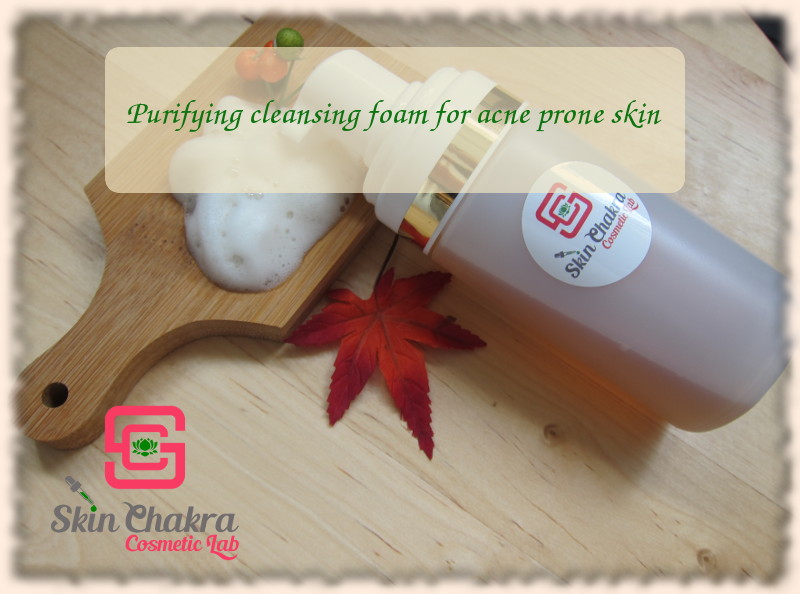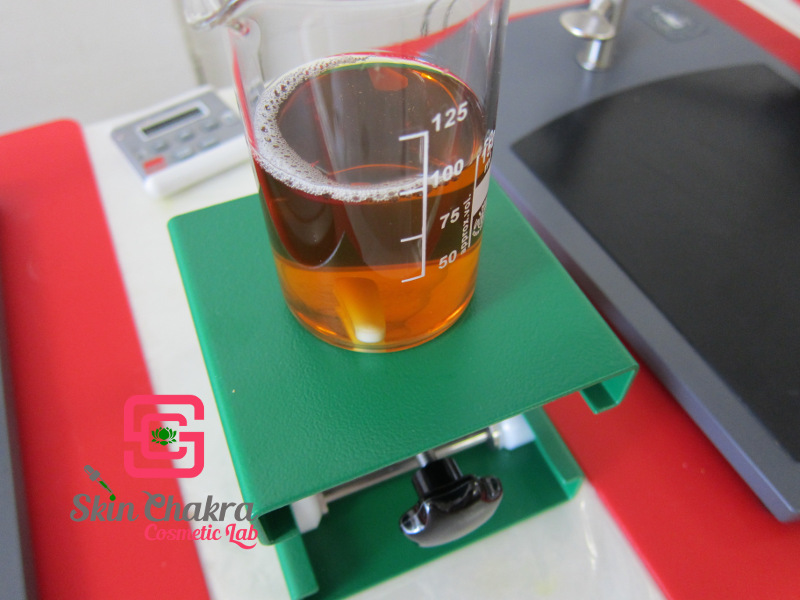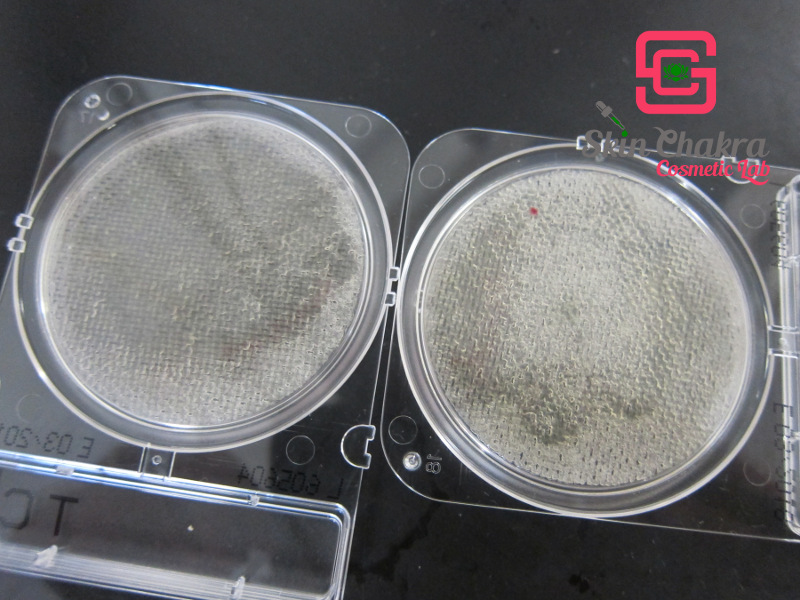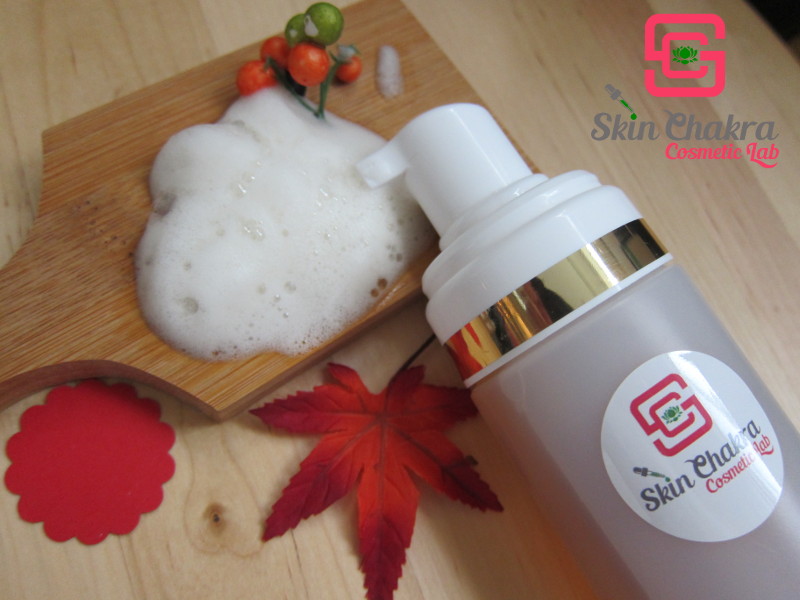
Sonntag, 1. Oktober 2017
Purifying facial cleansing foam for acne-prone skin

You probably know that I'm obsessed with cleansing foams. I find them the most gentle and fun way of cleansing skin (face and body) and tody I'm sharing a facial cleansing foam with our new active ingredient dermosoft decalact sebum which is specially created for greasy and acne-prone skin.
As you all may know, acne is a medical condition and cosmetic products are not allowed to make any claims about healing acne. If you decide to add this product to your product portfolio and sell it, make sure you're not trespassing the border between cosmetics and drugs. You can make cosmetic claims such as soothing inflamed skin, reducing redness, improving skin condition etc. without directly jumping into medical claims and getting involved in a legislative hassle.
Anyway, let's go back to our foam. Foams are actually quite easy to make. You need a very low concentration of a surfactant or a synergetic blend of surfactants. Less is more when making cleansing foams. It means you don't need to use high concentrations of surfactants. Applying more surfactants, in most cases causes an increase in the viscosity. Even if the increase in the viscosity is not visually obvious, that would have a negative impact of the performance of the foamer bottle. Well, that is not a big issue. A good foamer pump works excellent even with very low surfactant concentration and creates a rich fluffy foam.
That sounds perfect doesn't it?
The problem is, by using very low concentration of surfactants you would not be able to solubilize all of your essential oil and other lipophilic ingredients and you may need to apply a solubilizer or a cosolvent.
In best case, we try to find the optimum concentration of the required surfactants to keep the viscosity low and to solubilize all of our lipophilic ingredients by "trial & horror". Sometimes however, you may still need to add a solubilizer to improve the stability of the product at low and high temperatures.
Now that we know the most important factors to be considered when making a foam let's go to our formulation.
I have blended anti-inflammatory and soothing hydrosols and essential oils for this formulation.
I have been working with thyme hydrosol for years to improve acne-prone skin and it is my very first choice for acne condition. It has mild cleansing, disinfecting and antibacterial properties. If I were to choose only one hydrosol for acne preparations I would definitely select thyme. Yarrow is known for its anti-inflammatory and soothing properties. And melissa, oh melissa: it is such a gabulous hydrosol with soothing and antibacterial properties. I think if you only blend these three hydrosols (ours are preserved) and apply it over skin as a toner, the skin conditions would be visibly improved after a few applications.
For my essential oils I focused on soothing, antibacterial and anti-inflammatory properties rather than on scent. Wintergreen essential oil is a known remedy because of its salicylate content. Patchouli is one of the most soothing essential oils with additional antibacterial properties. Cedarwood is calming and improves skin blemishes. Finally I have added mandarin oil for its mildness and for its nice citrussy scent.
Formulation:
| Phase A | |
| Organic melissa hydrosol | to 100,0% |
| Organic thyme hydrosol | 25,0% |
| Organic yarrow hydrosol | 20,0% |
| Oramix L30 | 10,0% |
| Proteol APL EF | 4,0% |
| Coco glucoside | 3,0% |
| Hydroglyceric extract of dandelion and comfrey | 2,5% |
| Yucca extract | 2,0% |
| Sodium lactate | 2,0% |
| Panthenol | 1,0% |
| Plant based pentylene glycol | 2,0% |
| Natural betaine | 0,5% |
| Organic aloe powder | 0,2% |
| Allantoin | 0,2% |
| Dermofeel PA-3 | 0,1% |
| Phase B | |
| dermosoft decalact sebum | 2,0% |
| Organic mandarin oil | 0,2% |
| Organic Wintergreen oil | 0,1% |
| Organic Cedarwood oil | 0,1% |
| Organic Patchouli oil | 0,1% |
| Phase C | |
| Dermosoft 1388 eco | 2,5% |
| Versatil BL | 0,5% |
| Lactic acid 80% | 2-3% |
| Sodium citrate | 0,5% |
Procedure:
1- Blend phase A and phase B separately at room temperature. If you have a magnetic stirrer that would make your life much easier for blending phase A but it is possible to nicely blend everything with a spatula or glass rod if you don't have any magnetic stirrer.
2- Slowly add phase B to phase A and stir gently.
3- When all phase B is added to phase A and everything is homogenous measure the pH. We generally prepare a 10% solution in distilled water for pH measurements. In our case, the pH was about 6,40 and that was OK to add the preservative.
Make sure the pH is in the range of your preservative as you add your preservative
4- Add the preservative and re-measure the pH. In our case it didn't change a lot and it was 6,46 after adding the preservative.
5- Add lactic acid to reduce the pH. We applied 2,5% of 80% lactic acid to bring the pH to 5,21. You may need to play with your ingredients and measure the pH several times to come to the desired range.
6- The supplier of dermosoft decalact sebum recommends buffering products with 0,5% Sodium citrate . Otherwise the pH might drop over time and that will have a negatice impact on the stability of the product. We have been working with dermosoft decalact sebum only since a couple of months. Sofar we have not observed any drop in pH but it is too soon to make a decision. This is why we added 0,5% Sodium citrate to the foam. If you decide to avoid Sodium citrate make sure you keep an eye on your prototype formulations and check the pH every couple of weeks to see whether there is any need to add any Sodium citrate or not.
Anyway, in our case, adding Sodium citrate slightly increased the pH and brought it to 5,35 which is perfectly in our desired range.
The foam has a low viscosity and is quite transparent and homogenous (even after storage at low and high temperature)

7- Take your micro kit samples (microbial testing) and take your stability samples.

8- Fill the rest in a suitable foam dispenser.

It's your turn to start working with this active ingredient. Feel free to send us your questions and we'll be at your disposal. If you post any photos on Instagram, don't forget to tag @SkinChakra.

